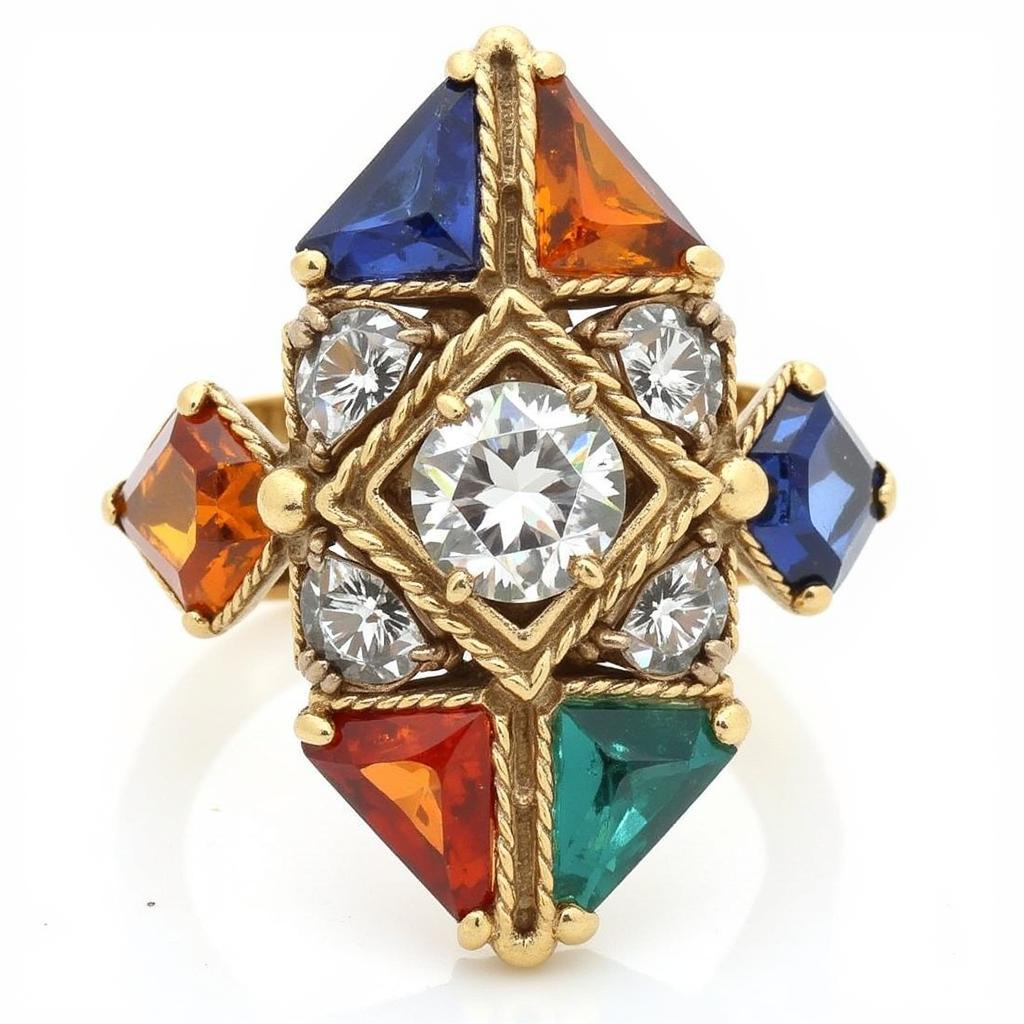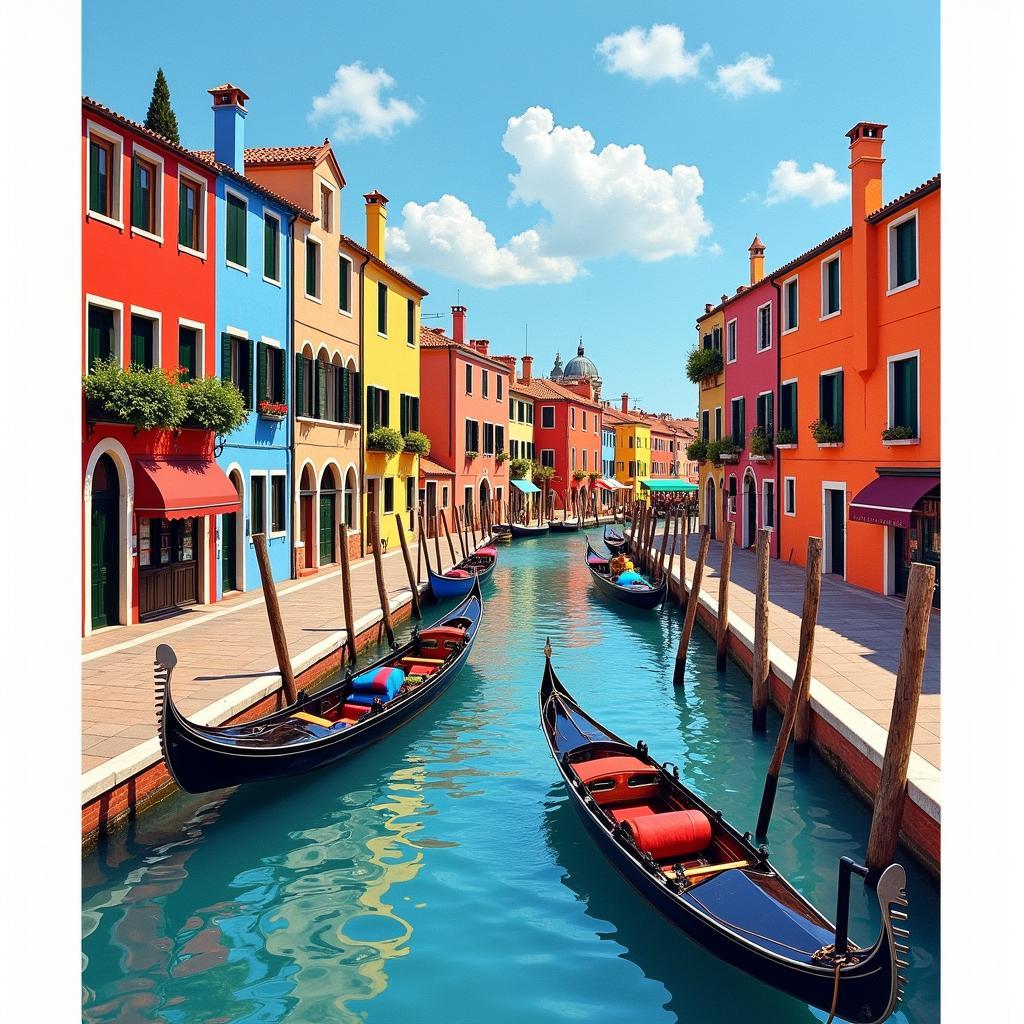Exploring the Exquisite World of Art Deco Ring Styles
Art Deco Ring Styles represent a captivating blend of geometric precision and opulent ornamentation. From the roaring twenties to today’s modern interpretations, these rings remain a timeless expression of elegance and sophistication. This article delves into the fascinating history, defining characteristics, and diverse styles of art deco rings, providing you with a comprehensive guide to appreciate and perhaps even acquire your own piece of this dazzling era.
The Defining Characteristics of Art Deco Rings
Art deco jewelry, especially rings, emerged in the 1920s and 1930s, a period of immense social and artistic change. It reflected the era’s newfound optimism, industrial advancements, and fascination with geometric forms. What sets art deco rings apart is their unique blend of bold geometry, vibrant color contrasts, and lavish use of precious metals and gemstones. Think sharp angles, symmetrical designs, and an overall sense of streamlined luxury.
One key element is the prominent use of geometric shapes like triangles, trapezoids, and chevrons. These shapes, often repeated and interlocked, create a visually striking and dynamic effect. Another hallmark is the contrasting color combinations achieved through the use of different gemstones and metals. Platinum, white gold, and diamonds were often paired with colorful gemstones like emeralds, rubies, sapphires, and even jade. This created a vibrant and eye-catching contrast, adding to the overall opulence of the design. You might be interested in browsing some coffee table books on art for more visual inspiration on this period.
 Art Deco Ring with Geometric Design
Art Deco Ring with Geometric Design
Popular Art Deco Ring Styles
Art deco rings encompassed a wide range of styles, catering to diverse tastes and preferences. Some of the most popular styles include:
- Filigree Rings: These rings showcase intricate metalwork, featuring delicate and ornate openwork designs.
- Geometric Rings: As the name suggests, these rings emphasize strong geometric shapes and lines, often featuring stepped or angular settings.
- Cocktail Rings: These large and flamboyant rings were designed to be statement pieces, often boasting a large central gemstone surrounded by smaller accent stones.
- Halo Rings: These rings feature a central gemstone encircled by a halo of smaller stones, creating an illusion of greater size and brilliance. They offer a beautiful way to highlight a particular gemstone.
- Target Rings: These rings feature a central gemstone surrounded by concentric circles of contrasting colors, resembling a target.
While browsing for old framed art can be a rewarding experience, collecting art deco jewelry offers a different kind of tangible history.
How to Identify an Authentic Art Deco Ring?
Identifying an authentic art deco ring requires careful examination of several key features:
- Materials: Platinum, white gold, and diamonds were commonly used. Look for bold color combinations using gemstones like emeralds, rubies, and sapphires.
- Design: Focus on geometric shapes, symmetry, and clean lines. Filigree work and milgrain detailing are also common.
- Hallmarks: Examine the ring for any markings indicating the metal content and maker’s mark.
- Setting: Look for intricate settings like bezel, prong, and channel settings, which were popular during the art deco era.
For those with a keen eye for interior design, exploring options like boho large wall art might complement the aesthetic appreciation of art deco rings.
Caring for Your Art Deco Ring
Art deco rings, like any fine jewelry, require proper care to maintain their beauty and value. Regular cleaning with a soft cloth and mild soap is recommended. Avoid harsh chemicals and abrasive cleaners. Store your ring in a soft pouch or jewelry box to protect it from scratches and damage.
What are some common misconceptions about Art Deco rings?
A common misconception is that all Art Deco rings are incredibly expensive. While some can be quite valuable, there are many affordable options available, particularly those using synthetic gemstones or less expensive metals. Another misconception is that they are all large and flamboyant. While cocktail rings are a signature style, many Art Deco rings are more subtle and delicate.
Conclusion
Art deco ring styles offer a timeless appeal that transcends fleeting trends. Their unique blend of geometric elegance and vibrant colors makes them a captivating choice for anyone seeking a piece of jewelry that exudes both sophistication and historical significance. Whether you are drawn to the bold geometry, the vibrant color combinations, or the intricate details, art deco rings offer a diverse range of styles to suit every taste. If you’re interested in expanding your art collection beyond jewelry, you might consider exploring middle eastern wall art or art garden sculpture.
FAQ
- What is the most valuable gemstone used in art deco rings? Diamonds, emeralds, and rubies are among the most valuable gemstones.
- Are art deco rings still popular today? Yes, art deco rings remain popular for their timeless elegance.
- What metals were used in art deco rings? Platinum, white gold, and yellow gold were common.
- How can I determine the value of my art deco ring? Consult a qualified appraiser for a professional valuation.
- Where can I buy authentic art deco rings? Reputable antique shops, auction houses, and online retailers specializing in vintage jewelry are good sources.
- What are some common motifs found in art deco ring designs? Geometric patterns, floral designs, and abstract motifs are common.
- Are there any modern interpretations of art deco rings? Yes, many contemporary jewelers create modern pieces inspired by art deco aesthetics.
When you need support, please contact us by Phone: 02462573573, Email: danteum@gmail.com or visit us at: Savico Megamall, 7-9 Đ. Nguyễn Văn Linh, Gia Thụy, Long Biên, Hà Nội 10000, Việt Nam. We have a 24/7 customer service team.


